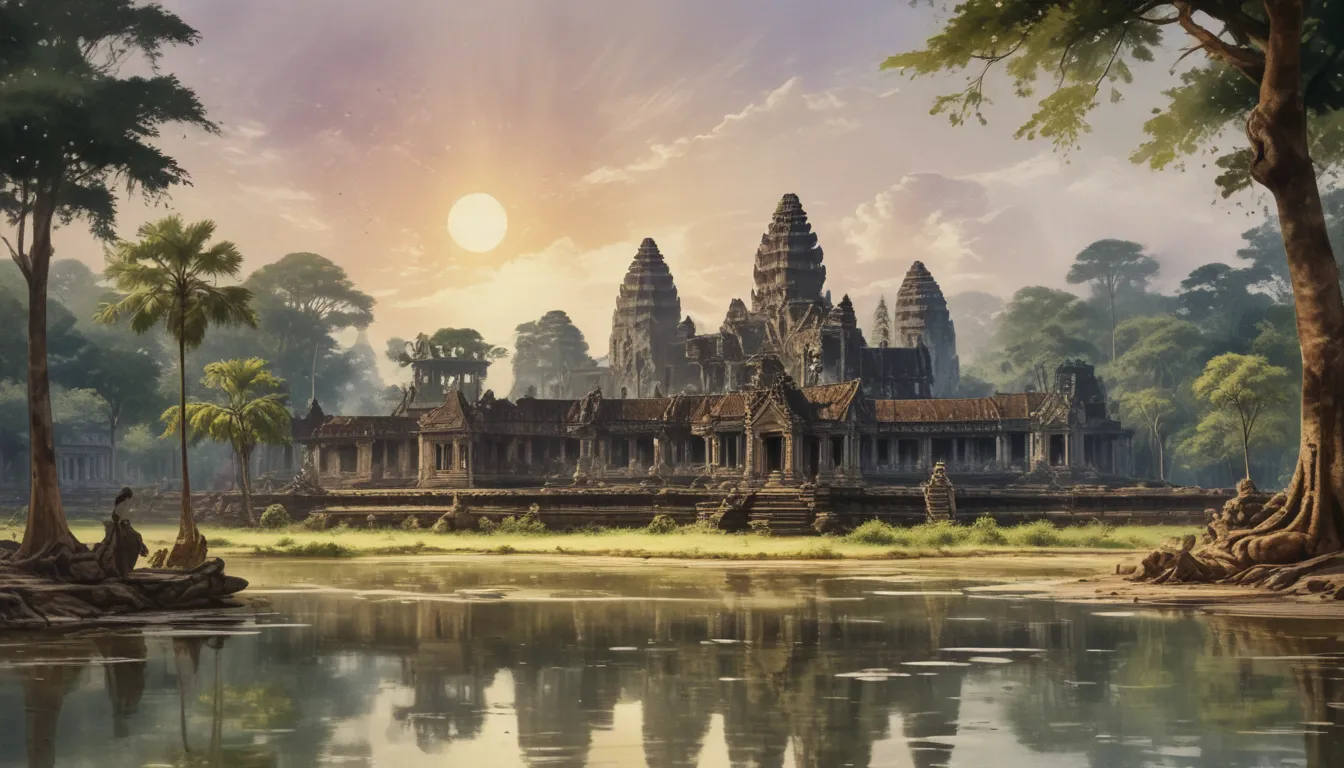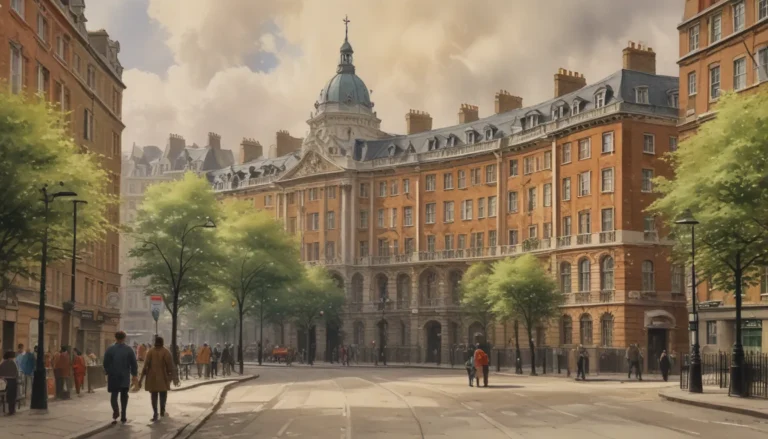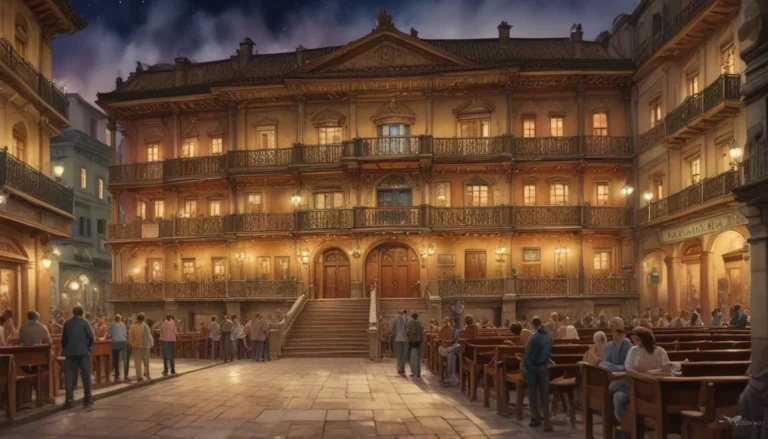The images in our articles are for illustrative purposes only and may not exactly match the content. They are intended to capture your interest and complement the text, not to replace it.
Welcome to the mystical world of Angkor Wat, a breathtaking temple complex in Cambodia that stands as a testament to ancient architecture and the rich cultural heritage of the Khmer civilization. As one of the most renowned archaeological sites globally, Angkor Wat continues to captivate visitors with its awe-inspiring beauty and historical significance. Join us on a journey as we unravel 15 fascinating facts about Angkor Wat, offering a glimpse into its captivating wonders.
Unveiling a Majestic Wonder
Angkor Wat is not simply a singular temple; it is an entire city complex spanning an impressive 402 acres (162.6 hectares). Its sheer size and grandeur make it the largest religious monument globally, leaving visitors in awe of its magnificence.
Delving into an Architectural Marvel
Built in the 12th century, Angkor Wat is a masterpiece of Khmer architecture. It melds elements of temple mountains, symbolizing Mount Meru—the abode of the gods in Hindu mythology—and galleries adorned with intricate bas-reliefs recounting mythological scenes.
Embracing Symbolism and Spirituality
Originally dedicated to the Hindu god Vishnu, Angkor Wat transformed into a Buddhist temple, embodying the harmony between Hindu and Buddhist beliefs. Its architecture and sculptures reflect the religious evolution of the Khmer Empire, blending spiritual influences seamlessly.
Experiencing Impressive Bas-Reliefs
The temple’s walls boast stunning bas-reliefs stretching for nearly 1,200 meters (3,937 feet). These intricate carvings depict scenes from Hindu epics like the “Churning of the Ocean of Milk” and the “Battle of Kurukshetra” from the Mahabharata, captivating visitors with their detailed storytelling.
Witnessing a Sunrise Spectacle
One of the most mesmerizing experiences at Angkor Wat is witnessing the sunrise over its majestic towers. Visitors gather in the early morning hours to witness the temple complex bathed in golden hues, creating an ethereal and enchanting atmosphere that lingers in their memories.
Unveiling the Hidden Capital
Beyond its religious significance, Angkor Wat also served as the political and administrative center of the Khmer Empire. Functioning as the capital city for centuries, it reflected the empire’s power and influence in shaping Southeast Asia’s history.
Exploring Engineering Marvels
The construction of Angkor Wat involved intricate engineering techniques. Featuring a sophisticated water management system, including moats and canals, the temple complex regulated water flow and prevented flooding—an impressive feat of ancient engineering.
Preserving Through Conservation Efforts
Despite facing challenges like war, looting, and natural deterioration, extensive restoration and conservation efforts have preserved Angkor Wat’s architectural splendor and cultural heritage. These endeavors ensure that future generations can continue to marvel at its beauty.
Recognizing UNESCO World Heritage Status
In acknowledgment of its historical and cultural significance, Angkor Wat earned UNESCO World Heritage Site status in 1992. This prestigious designation underscores its universal value and the imperative to protect and conserve this cultural gem for posterity.
Discovering Magnificent Temples
While Angkor Wat shines as the most famous temple in the complex, other stunning temples await exploration. Notable examples like Bayon, Ta Prohm, and Banteay Srei showcase unique architectural features and artistic details, each offering a glimpse into Cambodia’s rich cultural tapestry.
Uncovering an Abandoned City
Following the fall of the Khmer Empire, Angkor Wat lay abandoned, reclaimed by nature as the jungle engulfed its temples. The air of mystery surrounding them endured until the 19th century when French explorers rediscovered this hidden gem, a testament to nature’s resilience.
Appreciating Artistic Precision
The sculptures and carvings at Angkor Wat exhibit remarkable artistic precision. From stone reliefs to statues and intricate details, the skill and craftsmanship of Khmer artisans shine through, offering a window into the artistic prowess of a bygone era.
Symbolizing Towers of Myth
The five towers of Angkor Wat symbolize the peaks of Mount Meru, the mythical abode of the gods in Hindu and Buddhist cosmology. Their intricate design and symbolic significance stand out as a striking feature of the temple complex, inviting contemplation and wonder.
Embarking on a Sacred Pilgrimage
Angkor Wat remains a sacred site for both Hindus and Buddhists, drawing devotees worldwide to pay their respects, meditate, and seek blessings. Its spiritual aura continues to resonate, making it a revered destination for those seeking spiritual solace.
Embracing Tourism and Cultural Heritage
Today, Angkor Wat welcomes millions of visitors annually, bolstering Cambodia’s tourism industry and serving as a beacon of the country’s cultural legacy. Its popularity as a tourist destination fosters awareness of its historical and architectural significance, contributing to its preservation and appreciation.
Conclusion: A Timeless Wonder
Angkor Wat stands tall as a testament to human ingenuity, artistic brilliance, and the cultural legacy of the Khmer civilization. Its architectural wonders, rich history, and spiritual allure make it a truly enchanting destination that continues to inspire and captivate visitors from all corners of the globe.
Frequently Asked Questions (FAQs)
How old is Angkor Wat?
Angkor Wat dates back to the 12th century when it was built during the reign of King Suryavarman II, showcasing ancient craftsmanship and architectural splendor.
Can visitors explore the interior of Angkor Wat?
Yes, visitors can wander through the intricate interiors of Angkor Wat and even climb certain towers to enjoy panoramic views of the surrounding landscape, offering a glimpse into its historical grandeur.
How long does it take to fully experience Angkor Wat?
To soak in the beauty and intricacies of Angkor Wat, it is recommended to dedicate at least a full day to exploring the temple complex. Some visitors opt for multiple days to delve into all the temples within the Angkor Archaeological Park thoroughly.
When is the best time to visit Angkor Wat?
The optimal time to visit Angkor Wat is during the dry season spanning from November to February, offering cooler weather and lower precipitation, ideal for unhurried exploration and appreciation of its architectural wonders.
Are there any restrictions for visitors at Angkor Wat?
To honor the sacred nature of the site, visitors are expected to dress modestly and conduct themselves respectfully. Climbing on certain structures and touching the intricate carvings is prohibited to safeguard their integrity and historical significance.
Embark on a journey through time and culture at Angkor Wat, where ancient wonders and spiritual mysteries await discovery. Join us as we unravel the enchanting tapestry of this iconic site, standing as a lasting testament to human creativity and spiritual devotion. Explore, learn, and be inspired by the timeless allure of Angkor Wat.






